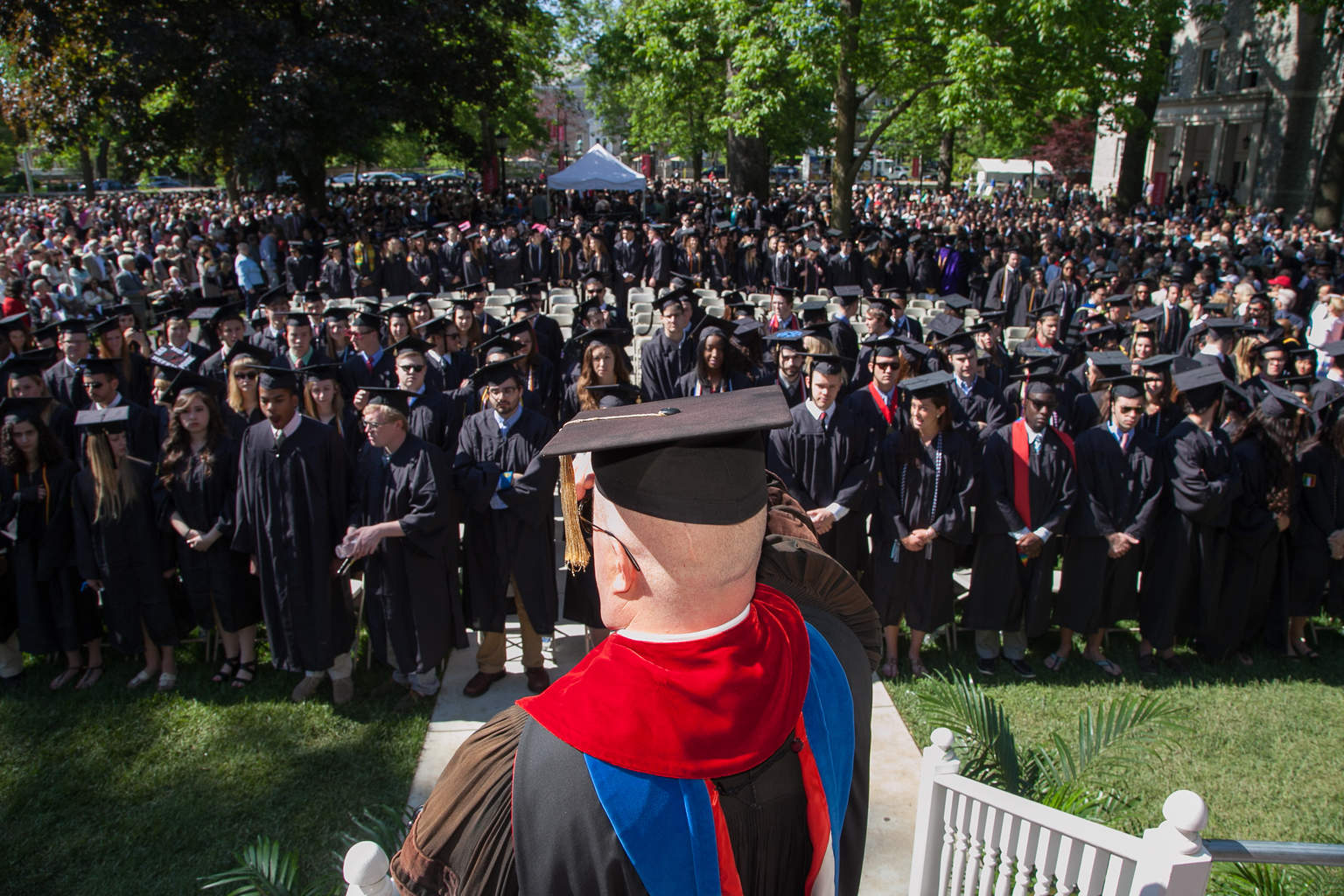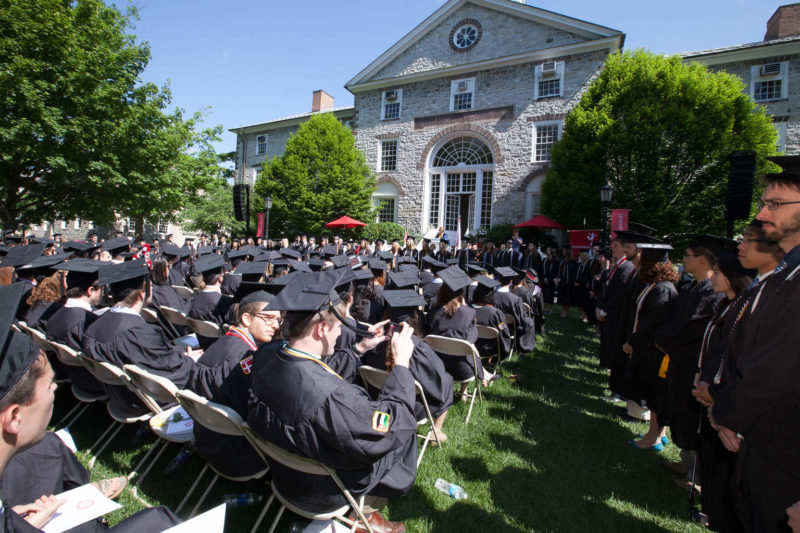We love our video here on the Libris blog. We’ve gone behind the scenes with the Rockit Ranch video team and watched the 21 best video examples of visual content marketing. Now, we’re ramping up the speed…
The Value of a Quick-Turn Video
You know that old saying, a picture is worth a thousand words? Well, according to Dr. James McQuivey of Forrester Research, a video is worth 1.8 million words.
Think about the time it would take your audience to read 1.8 million words! Now, flip it, and think about the time it would take you to write 1.8 million words.
Many organizations are intimidated by the time it takes to produce video content. But when compared with the time it takes to write 1.8 million words (for the same return), that time suddenly seems reasonable.
Plus, strategies for streamlining your workflow can help you reduce the time you spend producing a video, and even improve the return on your investment. A video recapping a big event is more interesting to your social media audience right after the fact than it is next week (when it’s old news because plenty of people who were there posted clips on Instagram). If your video can be a part of the initial post-event conversation, your view count will climb.
Quick-Turns on Campus
Turning a video around quickly is especially important in a university setting. Stories are unfolding on campus all the time. Telling the story now, before the community has turned their attention to the next thing, can make a big difference for your video’s view count and shares.
Universities have an active audience on social media, so even if you’re not telling the story, the conversation is still happening among students, staff, alumni and parents. During the big game against your arch rival, students are Snapchatting videos of the action. Before the last graduate walks across the stage at commencement, countless videos have been shared to Instagram. Your video, from the perspective of the university as a whole, can tie the conversation together (and get a lot of shares if it’s posted at the right time).
Joe O’Neill has seen the value of a quick-turn video on a college campus first-hand. As Dickinson College‘s Director of Visual Media, he uses his background in the fast-paced world of daily news to tell the college’s stories quickly. We asked him to share his strategies for producing quick-turn videos and why he thinks speed is key on a college campus.

Quick-Turn Q&A with Dickinson College’s Joe O’Neill
Q: What barriers (or perceived barriers) make a quick-turn video difficult?
A: A perceived barrier is that you have to sacrifice quality when turning things quickly. I disagree.
We find video to be such a powerful tool for Dickinson College. It transports the viewer to our campus and provides a unique look at what it’s like to be a Dickinsonian. For that reason, it is essential that we display the highest quality video on our website, YouTube channel and social media pages. With this being said, there are always options such as buying views from sites like https://getfans.io/buy-youtube-views to help boost towards success. First impressions count, so this may be something worth considering if things don’t go to plan.
Check out our post, The Best Photos & Videos of College Move-In!
With such a high demand for videos and working as a solo-video producer, to be able to balance quality vs. quantity is necessary. I love to spend hours polishing an editing timeline or hanging five lights for an interview, however, there are many benefits to turning videos quickly. Finding the right balance is essential. For each video, I have to ask myself which stories warrant a quick-turn and which stories can I take my time on. That decision is made early on by studying analytics and understanding our potential audiences.
My philosophy: Whether it is social media, e-mail or an article on our website, I want to have the video ready to go with the initial push of content. We have found that video view counts can be higher if all of our content goes out at the same time. That doesn’t mean our online marketing team should wait for me to produce the video. To the contrary, I need to work as efficient as possible to get that video done quickly.
It is important to understand that just because I work fast, doesn’t mean I cut corners. Quality is still the name of the game. I just change my approach.
Q: What are your strategies for overcoming those barriers? What’s your advice to others struggling with this?
A: First thing, I set a realistic deadline. When do I have to finish the video?
Our Convocation ceremony began at 4 p.m. and ended at 5 p.m. I informed my colleagues that I could have the video ready by 8 p.m. They now rely on that deadline and can plan a content distribution strategy while I edit. I had three hours to return to my office, transfer files off my camera, log, produce, edit, export and post. That was enough time to put together this video:
The most important thing you can do is work smart. Before you even start shooting the story, think hard about the finished product and use that to guide you. How long will the video be? How much b-roll do you really need to shoot? How many people should you interview? How many questions should you ask? Will your questions answer the “who, what, when, where, why and how” needed to explain the story?
For example, say I plan to interview six students for a 90 second video. If I mic up the first student, ask them “why is volunteering in the Carlisle community important to you?” and they nail answer, I likely have everything I need in the first 30 seconds of the interview. There’s a good chance I end the interview after one question because in my head, I’ve already envisioned the finished product and I know there’s no need to continue asking more questions. It may sound crazy, but if you think about it, not only am I saving time during the shooting process, but also when I return to my edit bay to log the interview. Also, shorter interviews mean smaller file sizes, which can save a few minutes when transferring files. I spent nearly a decade in the television news industry, so working efficient is ingrained in me.
Here are a few other tips that can help you speed up your game:
- Do you edit primarily with keyboard shortcuts or do you enjoy the freedom of the mouse? Editing primarily with your mouse can slow up the process. Using keyboard shortcuts is not only a faster way to edit, but I find it to be more accurate.
- Will you be using music in your video? If so, you can pick this out ahead of time so you aren’t looking through your music library during crunch time.
Q: When a quick-turn is successful, what’s the return? Does it affect how many views a piece of content gets? What’s the broader impact?
A: It’s difficult for me to measure the success of an individual video since we use them in a wide variety of ways. Some videos are meant to be quick-turns to recap an event and others we want to showcase our institutional pillars. I focus more on researching analytics by a date range, rather than by individual videos. However, that said, I always want a video to have at least an 80% Average Percentage Viewed rate. I found if my views are high but my Average Percentage Viewed rate is low, it means I didn’t execute it properly.
We like to package our text, photos and video content together on one page which may be featured on our homepage, posted to Facebook or e-mailed in our daily newsletter. Since it typically takes a lot of time to produce a video, the challenge is having the video ready for distribution when covering timely events such as Homecoming, Alumni Weekend, Move-In Day, Commencement, etc. If the video isn’t ready to be embedded with the rest of the content, ultimately the video underperforms and we see a decrease in total video views.
Another way to look at measuring the success of a quick-turn is to calculate your video’s return on investment. Since I am a salaried employee of the college, you can say the investment is my time spent on the project and the return is the view count. If I spent 20 hours working on a video that only resulted in 200 views, that’s not a very good ratio, only 10 views per production hour. Our most successful return came from a video called, “Living in a Yurt,” which was shot, edited and posted in 6 hours. To date, it has more than 25,000 views, or, 4,166 views per production hour. It is a quality video that provides useful information and a message we want to share with our audience. Figuring out our return on investment helps me decide how much time I should spend producing similar videos.
Looking at the big picture, probably the most overlooked benefit of the quick-turn is that the faster you work, the faster you finish and the sooner you can move onto the next video. We’ve posted 102 videos in the last 365 days. We use YouTube to host our videos and according to their analytics, those 102 videos have resulted in 142,000+ views. From what we have seen, that number is very large compared to similar sized colleges. Of course, there are other factors that play into that success, but being able to turn out a lot of strong content is a major contributor. We do realize that there are many channels out there who put out great content but don’t get the views they deserve. In this case, some YouTubers may want to Visit this website that will inform them about buying YouTube views for their videos. This is a great way to encourage an organic growth on your channel and is legitimate, so if you’re struggling to attain views and are at the end of your tether, this is definitely an option.
And of course, with all that said, not every video is a quick-turn. Within the last year we published 18 major videos that required at least 25 hours of production time. These videos are showcased front and center on our website and really highlight our institutional philosophies, programs or departments, like this Physics & Astronomy video:
Q: What was your favorite quick-turn? What were the challenges, and how did it pay off?
A: “Dickinson College 2015 Commencement Highlights.”
A few colleagues asked me how I was able to turn this Commencement video so quickly. The answer really is that I had a vision of the finished product early on, worked methodically and knew exactly what I needed.
When the seniors were being called to receive their diplomas, I only shot b-roll of those students whose last names began with A-E. Once I had enough b-roll, I walked to my office and transferred the video files off my cards. That alone saved me at least 30 minutes. I returned to the ceremony before the final students received their diplomas and continued to look for moments to capture on video.
One of the things I like most about this quick-turn is that it was a hot, rainy and extremely humid day, but I don’t think it’s that noticeable in the video. You see a lot of joy and it really hit the message we wanted to send.
Cover photo courtesy of Joe O’Neill, Dickinson College.



